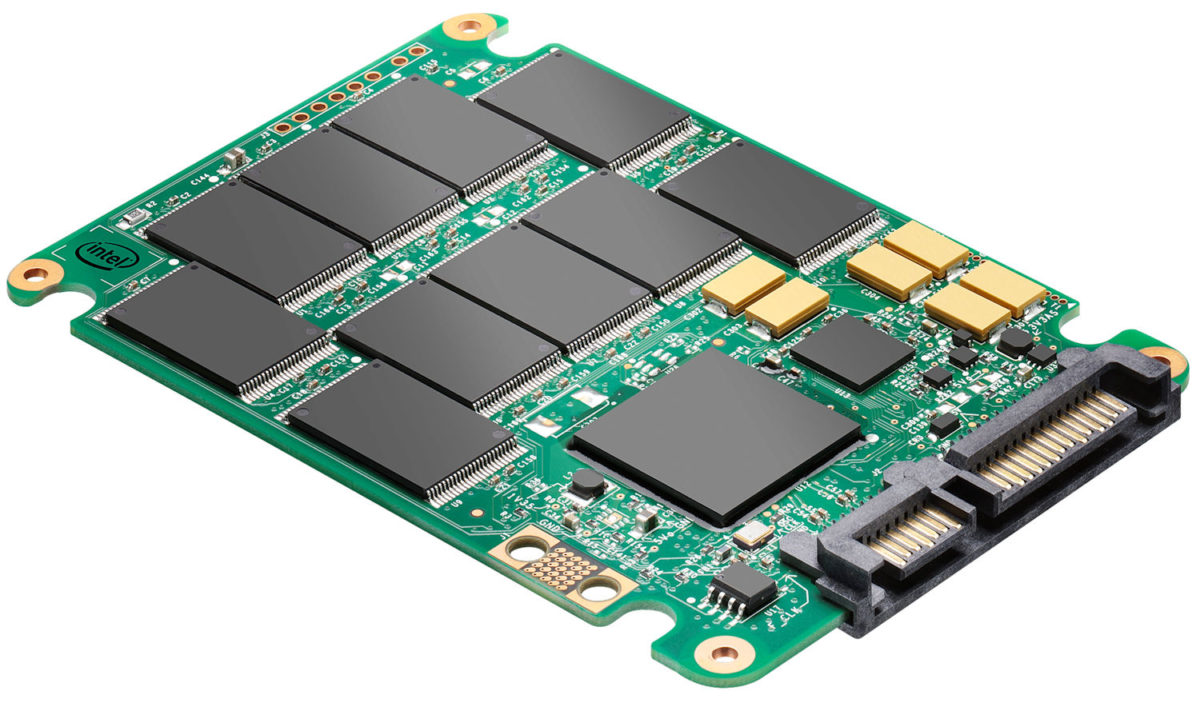Hard Disk Drives (most commonly known as just Hard Disks or HDD) have been our media of storage for over two decades and they’ve evolved ever since, be it in terms of capacity, speed, durability or functionality. But with time, just like stairs were replaced by escalators, necessity demanded to be the mother of an invention that demanded to provide the provision for PC users to have ultra fast storage that is beyond the imagination of even the fastest HDD on the planet. Solid State Drives also known as SSDs were the answer my friends.
Some of us are aware of the superiority of SSD technology over traditional Hard Disk storage, but for a further enlightenment into the aspects of the SSD technology, let’s start primitive.

Let’s begin with some aspects of a mainstream HDD that affect its performance. A traditional HDD has magnetic disks stacked on top of each other that have sectors to store data; the data is accessed by spinning these disks by a motor at high rate of rotation measured in Rotations Per Minute or RPM, most mainstream HDDs have 5400 RPM to 7200 RPM spindle speeds (WD Velociraptors have spin rate of 10,000 RPM) and spindle speed somewhat directly proportional to the effective speed of a HDD. In a nutshell, more the spindle spin rate, better the speed and performance. It has moving mechanical parts and this causes noise, vibration and heating along with erudition of the essential components in prolonged use.
Still you ask why SSD? Here are 5 reasons to buy an SSD!
1. Lightning Fast Speed
This is the most obvious fact, SSDs are known to be ultra fast storage media, lightning fast PC boot times and instantaneous transfer of volumetric data. Solid State Drive technology wasn’t alien last decade, in fact we’ve even used it. Flashdrives are examples of such manifestation of this technology. The same Non-Volatile DRAM memory technology got implemented into internal storage. The main difference between a flashdrive and an SSD is a firmware or memory controller software that makes an SSD a faster and smarter Flashdrive. SSDs use high bandwidth memory chip along with larger buffer cache (~256MB whereas HDDs have ~64MB) that helps even the most cheap-so SSD surpass speed of the fastest HDD there is. The difference is that prominent.
2. Zero Vibration and Noiseless Functioning
Since there are no moving mechanical parts inside, there is no ambient vibration that can be felt by touching it. This makes SSDs an ideal choice for quite work-station or even domestic PCs. The same implementation in laptops can further improve performance and reduce noise levels as well as interference or even damage caused to other components due to HDD vibrations.
3. Ultra Low Power Consumption
Even the large capacity SSDs consume minimal power while operating (~2W) and even less while idling (~1mW), contrary to the HDDs which consume approximately 3 times the power. This could increase the battery life of a notebook PC.
4. SSDs are Lighter
SSDs dump the spindle, platter, read arm and other mechanical components residing inside a HDD and is only composed of flash memory, the interface controller, the interface (SATA port) and memory controller. This feature yet again helps notebook PC owners as it makes them lighter to carry around besides the performance advantages.
5. Operating Temperatures
The temperatures of HDDs rise after prolonged and continuous use due to the fact that it has moving components that aren’t 100% frictionless and generate small amount of heat while the magnetic disks (platters) spin. Temperatures are yet again a big concern for Laptops and even desktops since cooling is a bummer on former while potent hardware inside the latter themselves generate a lot of heat.
With all this, you might wanna upgrade to an SSD. Thanks for reading.




